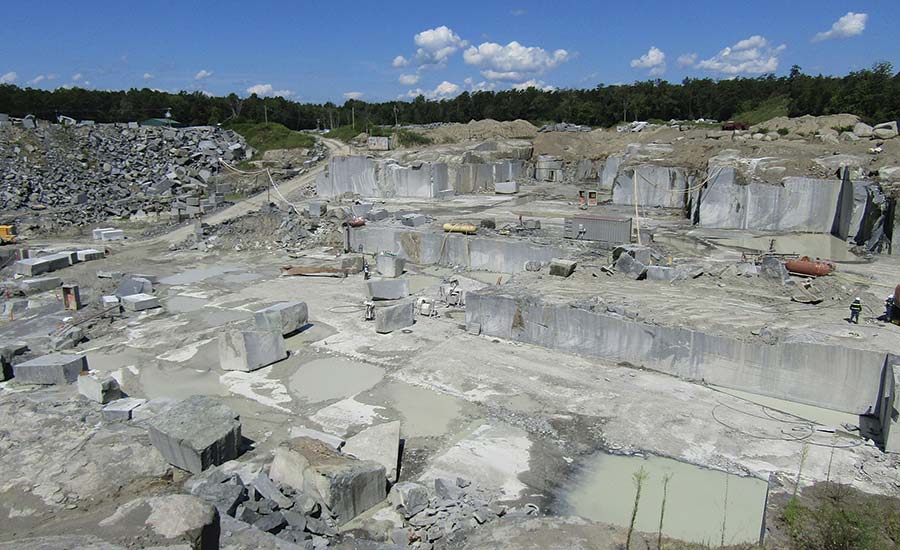Journeying Through Granite Quarries in South Africa: A Visual Odyssey
Journeying Through Granite Quarries in South Africa: A Visual Odyssey
Blog Article
Discovering the Rich History and Sustainable Practices of Granite Quarrying
As we stand on the precipice of discovering the complex tapestry of granite quarrying, a journey with time reveals not simply the physical act of drawing out rock however additionally the social and historical relevance woven right into the extremely fabric of this method. From the old origins that laid the structure for contemporary quarrying techniques to the lasting practices that are shaping the future of this market, each chisel mark on granite surfaces tells a story waiting to be unearthed (granite quarries in south africa). The legacy of granite quarrying extends much past simple removal; it is a testimony to human resourcefulness, resilience, and the long-lasting allure of this stunning stone
Ancient Origins of Granite Quarrying
Dating back to old civilizations, the practice of quarrying granite has been an indispensable part of human history and architectural innovation. The earliest proof of granite quarrying go back to old Egypt, where huge pyramids and intricate sculptures were crafted from this long lasting stone. The Egyptians utilized primitive devices to draw out granite blocks from quarries, showcasing the value of this material in their significant buildings.
Progressing in background, the Greeks also made substantial contributions to the quarrying of granite. The Greeks made use of granite in different building wonders, such as holy places and statues, showing their ability in shaping and carving this hardy rock. The Romans further refined the strategies of quarrying granite, using innovative tools like blades and hammers to remove and form granite for their famous frameworks.
With the centuries, the technique of quarrying granite has developed, with modern-day technologies boosting effectiveness while preserving the ageless allure of this all-natural rock - granite quarries in south africa. From old civilizations to contemporary builders, the tradition of granite quarrying continues to shape our world
Development of Quarrying Methods
The advancement of quarrying techniques has been noted by a continuous progression towards better performance and precision in removing granite. Early quarrying techniques included hands-on labor with standard tools such as knives, hammers, and wedges to draw out granite blocks from the earth.
Improvements in computer-controlled tools and 3D modeling have maximized quarrying operations, leading to minimal ecological effect and improved sustainability methods. As the demand for granite proceeds to rise, the evolution of quarrying techniques continues to be integral to conference sector needs efficiently and sustainably.
Cultural Relevance of Granite
Granite holds a profound cultural significance across different human beings because of its long-lasting presence in building masterpieces and prized monuments. From the impressive pyramids of Egypt to the detailed carvings of the Angkor Wat holy place in Cambodia, granite has been a product of selection for sharing magnificence and long life in cultural resource heritage. In ancient Rome, granite columns decorated holy places and public buildings, symbolizing strength and permanence. The social relevance of granite prolongs beyond its physical attributes; it personifies strength, stability, and timelessness, making it a sign of withstanding traditions and practices.

Lasting Practices in Quarrying
In the middle of the rich background of granite quarrying and its cultural importance exists an expanding emphasis on lasting techniques within the market. As environmental recognition and problems about source exhaustion have enhanced around the world, the quarrying industry has significantly accepted lasting techniques to minimize its influence on the atmosphere and surrounding neighborhoods.

Furthermore, reclamation and look at here now rehabilitation of quarry sites post-extraction are integral to sustainable practices. By restoring quarried areas to an all-natural or beneficial state, such as creating wildlife habitats or entertainment rooms, quarriers can counter the ecological impact of their procedures and add favorably to the neighborhood ecosystem.
Heritage of Granite Quarrying
With a historic backdrop soaked in workmanship and commercial progress, what sustaining influence has granite quarrying left on the landscape of modern culture? The tradition of granite quarrying click here for info goes beyond simple extraction practices; it has actually formed architectural marvels, city landscapes, and social heritage worldwide. The resilient nature of granite has made it a recommended option for monuments, structures, and facilities, standing as a testament to the ability and creativity of quarry workers throughout generations.
Additionally, the economic impact of granite quarrying can not be ignored. The sector remains to give work opportunities and drive neighborhood economic situations in regions where granite removal prevails. It has also stimulated technological advancements in quarrying strategies and equipment, leading to extra effective and sustainable techniques.
In regards to sustainability, the tradition of granite quarrying includes efforts to mitigate ecological impacts with reclamation tasks and accountable source administration. By balancing economic rate of interests with ecological stewardship, the industry makes every effort to guarantee that future generations can remain to gain from this enduring all-natural resource.
Verdict

Report this page